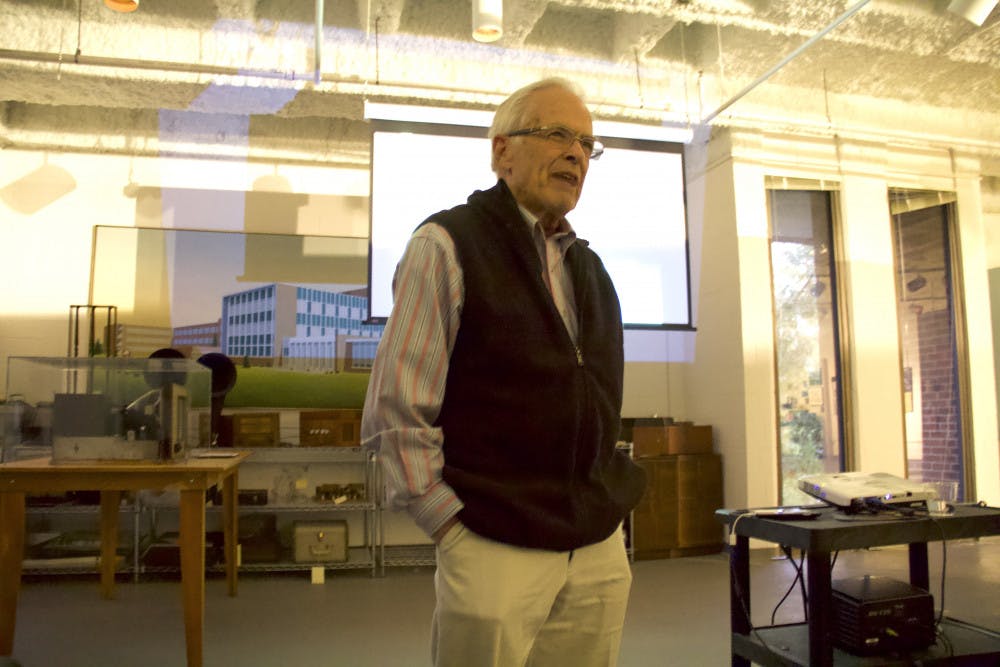By Camille Furst
News Assistant
The Sarnoff Collection presented an exhibit focusing on the the execution, recording and broadcasting of the Apollo missions on Wednesday, Oct. 24 in Roscoe West Hall.

The collection, which documents the progress of the Radio Corporation of America from its inception to the present day, exhibited multiple RCA inventions that advanced national communication, specifically the manned space program. The company gained contracts from NASA to be the official corporation to record all missions into space.
The audience was given time to explore the exhibit and become familiar with the RCA, which was followed by a presentation from Sam Russell, the former project engineer at RCA Astro-Electronics.
Ever since he was a child, Russell was always intrigued by the idea of travel, space “and the possibility that someday a man might walk on the moon,” he said.
After attending both Massachusetts Institute of Technology and the Rochester Institute of Technology, he was able to exercise his engineering expertise during the Gemini GT-4 mission in 1965.
Being one of six sailing out from Peru, he was part of the communication team during NASA’s first trip into space.
“NASA decided just then to make this the first time a man has direct contact with space,” Russell said. “It was a really exciting time.”
The minutiae of the “extremely slow” communication he was working with was juxtaposed with the monumental moment of man’s first contact with space heightened his passion for astro-electronics and communication.
Although Russell said he was not directly involved with most of these missions, models of the communication devices used in these undertakings were presented at the exhibit.
However, during Apollo 11 — the first mission to put man on the moon— Russell worked with other NASA employees who were working on the project in the TV laboratory in Houston as part of the Astro-Electronics Division of RCA.
There were many complications with the previous Apollo missions in terms of recording it and having it broadcasted on television. For example, in a previous mission, the exposure of the picture was too high and the picture went blank.
Because of the mistakes of capturing images of the previous missions, the stakes were high with Apollo 11.
“Everyone’s reputation was on the line,” Russell said. “The whole Earth was watching. The most relief was when that picture came on the screen.”
Russell then elaborated on the technology used for this mission. For it to be broadcasted to the country, it “was a separate autonomous television station” that was grounded on the moon.
Audience members were enthralled by the revelation of these nuances involved in such a major space mission. Engineers, photographers and students alike were in attendance.
College President Kathryn Foster also attended the presentation to learn about the “history of a memory.”
“This kind of presentation brings people onto the campus who might never have otherwise come,” Foster said. “The Sarnoff Collection is phenomenal. I hope that people will go check it out.”







